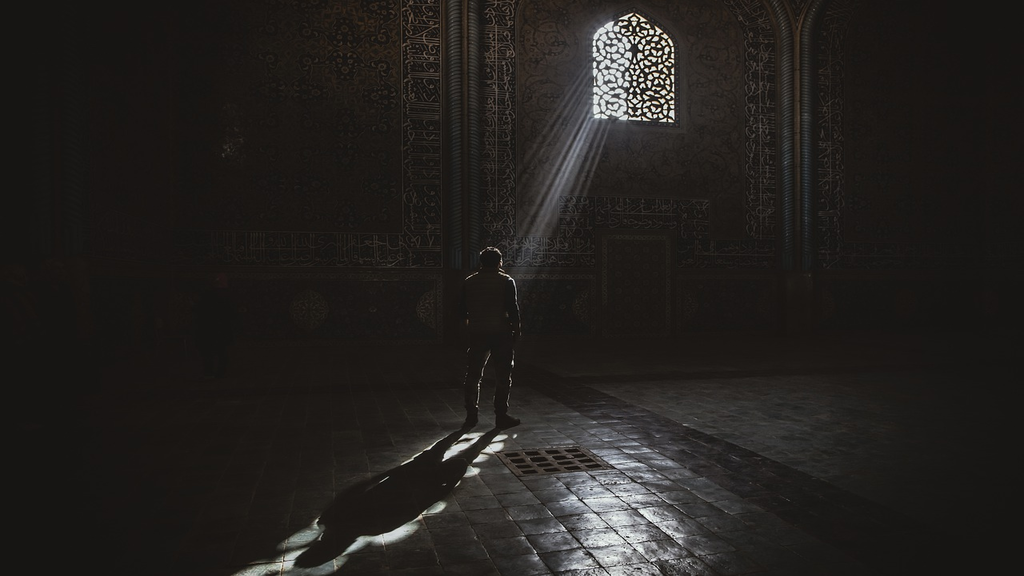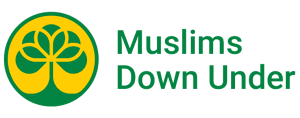HORATIO: Have after. To what issue will this come?
MARCELLUS: Something is rotten in the state of Denmark.
HORATIO: Heaven will direct it.
(Hamlet Act 1, Scene IV, William Shakespeare)
INTRODUCTION
Do you remember the time before Donald Trump’s presidency when everyone got along and we all sat around singing kumbaya with each other?
Yeah, me neither.
Undoubtedly Donald Trump has given racism, xenophobia, bigotry and white-supremacy a voice like it hasn’t had in decades. He’s called Mexicans rapists, labelled all Muslims terrorists, spoken of women in the most appalling and misogynistic way, and now is giving support and cover to Neo-Nazis. Indeed, the words of the Caliph of the Ahmadiyya Muslim community, Mirza Masroor Ahmad, in October 2016 to Canada’s veteran interviewer Peter Mansbridge, may prove prophetic. Ahmad stated that he feared for civil war in America if Trump were to enact the policies he ran on. With the growing unrest between communities in the United States, that possibility seems closer than ever. Nevertheless, we should realised that Trump is not the cause of America’s race problem; he is a symptom of a much deeper malaise.
Here in the UK, the idea of violent protests by Neo-Nazis over the removal of a statue of an individual who lived around 150 years ago, seems utterly ridiculous. Yet to anyone who understands the US, its history and its culture, this isn’t at all surprising. While many Trump supporters voted against the establishment as a result of the failed economic policies of Neo-Liberalism, the Neo-Nazis don’t get such an easy pass. Indeed, there are plenty of individuals in the Neo-Nazi movement – such as Richard Spencer, who is credited with conjuring up the “alt-right” label – who are from wealthy and privileged backgrounds. So let’s be clear on what this isn’t. This isn’t pre-WW2 Germany, when the National Socialist party used the economic woes and hyperinflation left in the wake of WW1 to stir up hatred against all who did not fit their fantasy of ethnic purity.
This is America, and its the 21st century.
“WHEN THE PRESIDENT DOES IT… IT IS NOT ILLEGAL”
Robert E. Lee was, by all accounts, a rather hapless leader of the Confederacy. After reading through the history of his rather pathetic defeats – with which I will not bore you – one may sum up his military career with the words: Good on aggression, poor on strategy (“like father like son,” springs to mind). To say he was cruel to the slaves he inherited from his father in law would be an understatement. One former slave is on record as having described him as “the worst man I ever saw”.
To understand why his statue is still so controversial, one must understand a basic fact of the United States: slavery may have formally ended with the civil war, but the mentality underpinning it did not. Indeed, the mentality of slaves and slave-owners has been perpetuated through the Jim Crow laws of the early 20th century, and now increasingly, through the criminal justice system.
Think I’m exaggerating? What else can one call a system in which, by 2001, the number of black men in prison was equivalent to the number enslaved in 1820: 792,000. The United States has 5% of the world’s population but has 25% of the world’s prison population (1). With the growth of private prisons, prisoners are forced into labour for private companies, being paid 17 cents an hour for a maximum of six hours per day. The names of the slave masters may have changed from “Jones” to “CoreCivic”, but when African-Americans are systematically targeted by the justice system and channelled into a private prison system that uses their collective labour for industrial purposes, then the reality for African-Americans cannot be said to have changed awfully much.
But is it true? Are African-Americans targeted by the criminal justice system? According to a recent study, African-Americans are around 5 times more likely to be incarcerated in most states than white people, and 10 times more likely in Oklahoma and New Jersey. Some may say that this is because black people are more likely to commit crime, and while this may be true to some extent in certain regions and activities, black people commit nowhere near enough crime to warrant such statistics.
A key insight into the systematic discrimination of African-Americans can be gleaned when we take into account a frank admission made by John Ehrlichman, Nixon’s key domestic-policy aide. During an interview in 1994, reported in 2016 by Dan Baum, he stated:
“The Nixon campaign in 1968, and the Nixon White House after that, had two enemies: the antiwar left and black people. You understand what I’m saying? We knew we couldn’t make it illegal to be either against the war or black, but by getting the public to associate the hippies with marijuana and blacks with heroin, and then criminalizing both heavily, we could disrupt those communities. We could arrest their leaders, raid their homes, break up their meetings, and vilify them night after night on the evening news. Did we know we were lying about the drugs? Of course we did.”
The statistics support Ehrlichman’s admission. From the stage of profiling, to arrest, conviction, and to sentencing, black individuals have been shown time and again to be subjected to discrimination, resulting in the explosion of the prison population from 1970 to 2005 by 700%. Racial profiling means that according to the Department of Justice, black and Hispanic men are three-times more likely to be searched during a traffic stop than white counterparts. Black people have been shown to be arrested 3.7 times more often for marijuana possession than white people even though usage in both communities is equal. While constituting 35% of arrests for drug offences, black people suffer 46% of convictions. Incarceration rates among convicted black men have been found to be twelve times that of white men for drug offences, with black women incarcerated 4.8 times that of white women. Once convicted, African-Americans are the recipients of longer sentences compared to white offenders, for the same crime, by 10%. Applying some of these statistics, one writer found that for 1000 white people and 200 black people arrested for a given crime, 19 white people and 24 black people would be sent to prison. The result of such discrimination? In 2001, around a third of black men between the age of 20 to 29 were incarcerated.
When these issues are looked at in light of the fact that former felons are disenfranchised from voting according to the Felony Disenfranchisement Laws, resulting in some 5.5 million former felons no longer having voting rights in the last presidential election, we can see that discrimination in the criminal Justice system is a means of systematically denying power to the African-American community.
Despite these hurdles, African-Americans have pulled themselves out of poverty steadily since the late 1960’s, when key Civil Rights legislation such as the Civil Rights Act was passed. In 1967, African-Americans constituted 34% of all Americans living in official poverty. In the beginning of the 21st century this has come down to 25%. In comparison, the percentage of all Americans in poverty has remained steady at 11.5%. Similarly, Black families with single female mothers constitute 37.2% of all African-American households, a considerable decline since 1967 when the figure stood at 56%. By comparison, the percentage of single-mother families throughout the United States has remained steady at between 30-33% since 1967. These statistics belie the myth perpetuated by many conservatives that the Black population is poorer because of its own shortcomings. Despite systematic discrimination at many levels, the black community have made significant gains when given even marginal opportunities.
White supremacy is making a resurgence today for a simple reason: America is allergic to black success.
And therein lies the rub. White supremacy is making a resurgence today for a simple reason: America is allergic to black success. Why? Because the mentality of the slave owner has continued among many sections of white society, and black success in public life – especially in more professional circles – is something that does not fit with their notions of black inferiority. Barack Obama’s election is a perfect case in point. The rise of a black man to the highest position in society was so deeply contradictory to their view of black people as an inferior, subject race, that it created a frenzied reaction, resulting in the birther lie, and a far right media machine that smeared him year after year. As if suffering an anaphylactic reaction, America is now at war with its own self. After giving a black man two terms in office, a vote for a racist, white-supremacist supporting bigot was inevitable.
Thus, when white supremacists express claims to racial superiority, they are not expressing something new. They are expressing an ideology that is as old as America itself, and which has been brought to the surface by the success African-Americans are making in public life.
So how can we be rid of an ideology so embedded in American history, culture and mentality? We cannot be rid of these racist ideologies through twitter memes. Laws will not rid us of this idea, neither will wars. Indeed, one of the bloodiest civil wars in the world’s history – the American civil war – could not erase such racist ideologies. The solution lies in a much older approach, one that seeks moral reform alongside legislative reform.
THE BANNER OF BILAL
Bilal was an Abysinnian who had spent much of his life as a slave in the house of Arab masters. When he accepted Islam at the time of Muhammad, prophet of Islam, while still a slave – he was beaten brutally in public in the most inhumane fashion. His master was ashamed that Bilal had the gall to accept a new religion while yet being his property. And so, wishing to demonstrate superiority over his slave, he dragged him through the streets of Mecca, beat him mercilessly under the Arabian sun, and whipped him until his back bled raw.
Yet Bilal won out. His single minded determination to never recant his faith exhausted his own slave-master of beating him. The slave master, when offered money for purchasing Bilal by Abu Bakr, a wealthy Muslim, readily sold him, happy to be rid of the burden of maintaining his “honour”. Abu Bakr set Bilal free at once. For the rest of his life, in Mecca, and then after the migration to Medina, Bilal lived as a free man, and as one of the most honoured and revered companions of the Prophet.
The way that the Prophet of Islam sought to end slavery was diametrically opposed to the way America has gone about seeking to end slavery. America took a purely legislative approach, ignoring the reality that slavery is an entire way of thinking. The Prophet of Islam sought instead to change the way the Arabs thought about slaves, while at the same time bringing in legislation so that slavery would be phased out of society gradually, recognising that the sudden emancipation of slaves, who had never learned to live independently, or acquire skills necessary for independent living, would be dangerous both for the economy and for the slaves themselves.
His legislative approach was to firstly close the door on the possibility of enslaving anyone, stating that God would be the enemy of anyone who enslaved another. He also made it illegal to have anyone born into slavery. At the same time, the Qur’an provided slaves themselves the possibility of buying their own freedom by entering into an employment contract with one’s slave-owner. In addition, the Qur’an prescribed the freeing of slaves for numerous reasons: as a righteous act (90:14), as an act of charity (9:60), as a penalty for breaking an oath (5:90, 58:4) and for accidental manslaughter (4:93). The Prophet of Islam further taught that “Whoever frees a Muslim slave, Allah will save all the parts of his body from the (Hell) Fire as he has freed the body-parts of the slave” (Bukhari, Vol 3, book 46). Even to mark events of significance, such as lunar and solar eclipses, the Prophet of Islam taught Muslims to free slaves (Bukhari, Vol 3, book 46).
More than the legislative aspect, the Prophet of Islam uplifted the station of slaves in society. He taught that they had an equal position in the sight of God as free people. When the prophet of Islam heard a Muslim abusing his slave verbally, the Prophet of Islam scolded him, telling him that he had still a characteristic of pre-Islamic ignorance. He went on to tell him that his slave is his brother whom God had granted him temporary command over and nothing more. “So whoever has a brother under his command should feed him of what he eats and dress him of what he wears,” he said. “Do not ask them (slaves) to do things beyond their capacity (power) and if you do so, then help them.”
The Qur’an he brought forbids utilising slaves as prostitutes – something that was common in his time, and raised the position of female slaves in general by mandating that sexual relations with any woman – free or slave – must be done in a mar’uf manner, meaning, among other things, consensual. This put an end to unacceptable and vile crime of raping slave women. He further taught that anyone who strikes a slave must immediately free them, otherwise they would face hell in the afterlife. Through such teachings, he raised the position of slaves, and trained the Arabs to think of slaves as their brothers and family members, rather than as inferior serfs.
In a sense, the reformation of attitudes towards slaves was a victim of its own success; slaves lost all will to change their lot and to seek their freedom. This, coupled with neglect by Muslims of the Islamic teaching that no one could be born a slave, and that prisoners of war were to be freed at the termination of hostilities, resulted in the perpetuation of slavery in the Islamic empire. Yet, though slavery persisted in Islamic empires, there were no uprisings of slaves as one saw in the Roman empire towards its decline. This was because the very institution was radically different to that witnessed before or indeed after, in human history.
“An Arab has no superiority over a non-Arab nor a non-Arab has any superiority over an Arab; also a white has no superiority over black nor a black has any superiority over white except by piety and good action.”
The Prophet of Islam.
Bilal is a perfect example of the Prophet of Islam’s attitude towards slaves. A freed slave would be regarded in Arab society as the lowest of free men. Yet the Prophet of Islam gave Bilal the great honour of being the first muezzin – caller to prayer in Islam. More than that, on the day of the conquest of Mecca, as he marched into the city with 10,000 soldiers, in a bloodless conquest, he announced to the Meccans certain places in which they would be safe, free from hostility. One of these places was under the flag of Bilal. Thus, he forced the Arabs, so proud of their racial heritage, to seek shelter and safety under the flag of a black, Abyssinian freed-slave.
Finally, on the day of Arafat, the last sermon of the Prophet of Islam, he gave forth a teaching to the world that to this day, mankind has neglected and ignored:
“All mankind is from Adam and Eve. An Arab has no superiority over a non-Arab nor a non-Arab has any superiority over an Arab; also a white has no superiority over a black nor a black has any superiority over white except by piety and good action. Learn that every Muslim is a brother to every Muslim and that the Muslims constitute one brotherhood. Nothing shall be legitimate to a Muslim which belongs to a fellow Muslim unless it was given freely and willingly. Do not, therefore, do injustice to yourselves.”
America’s wounds run deep and extend back through the centuries. Legislation, though important, is not enough, for as we have seen with the criminal justice system, slavery changes its name but not its essential reality. The very mindset of the slave-master and the slave must be eradicated. To do so, America must follow the teaching and approach of the Prophet of Islam.
- Roy Walmsley (November 21, 2013). World Prison Population List (tenth edition). International Centre for Prison Studies.
Originally published on the Rational Religion UK website on 27th August 2017





